Omega Brand
Ralph Ellison’s Speedmaster Watch Is Acquired By OMEGA At Auction
Luxferity, 13.12.2021

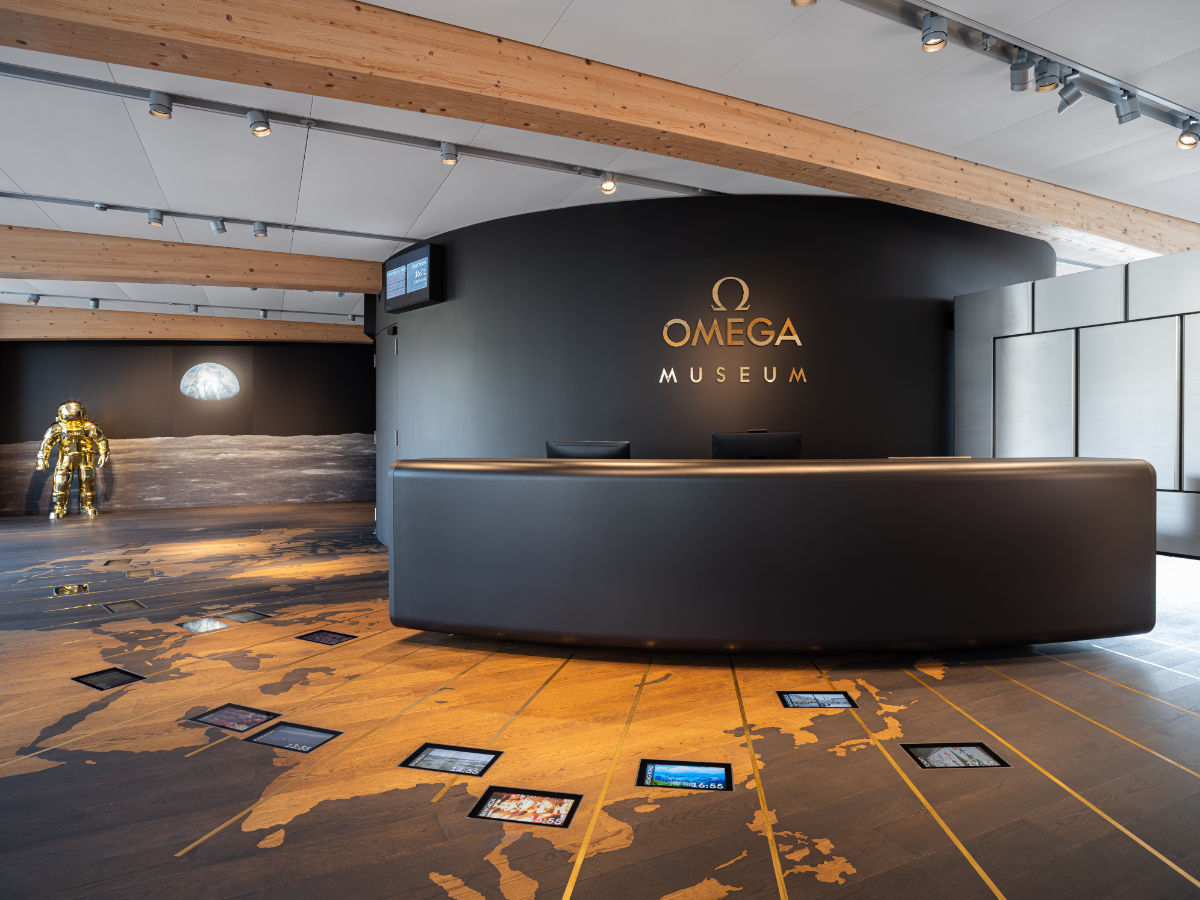
The OMEGA Museum has proudly acquired the Speedmaster watch once owned by the famed American novelist, Ralph Ellison. Having received intense interest at a Phillips auction in New York, the historic timepiece will now return to its original home in Biel, Switzerland, where it will be showcased for museum visitors.
Ralph Ellison is best known for his 1952 award-winning novel, Invisible Man. Influenced by his own personal struggles, the story addressed many of the social and intellectual issues faced by African Americans in the early 20th century. The book’s genre-defying impact garnered great acclaim, and won Ellison the National Book Award For Fiction in 1953 – the first African American writer to claim the prize.
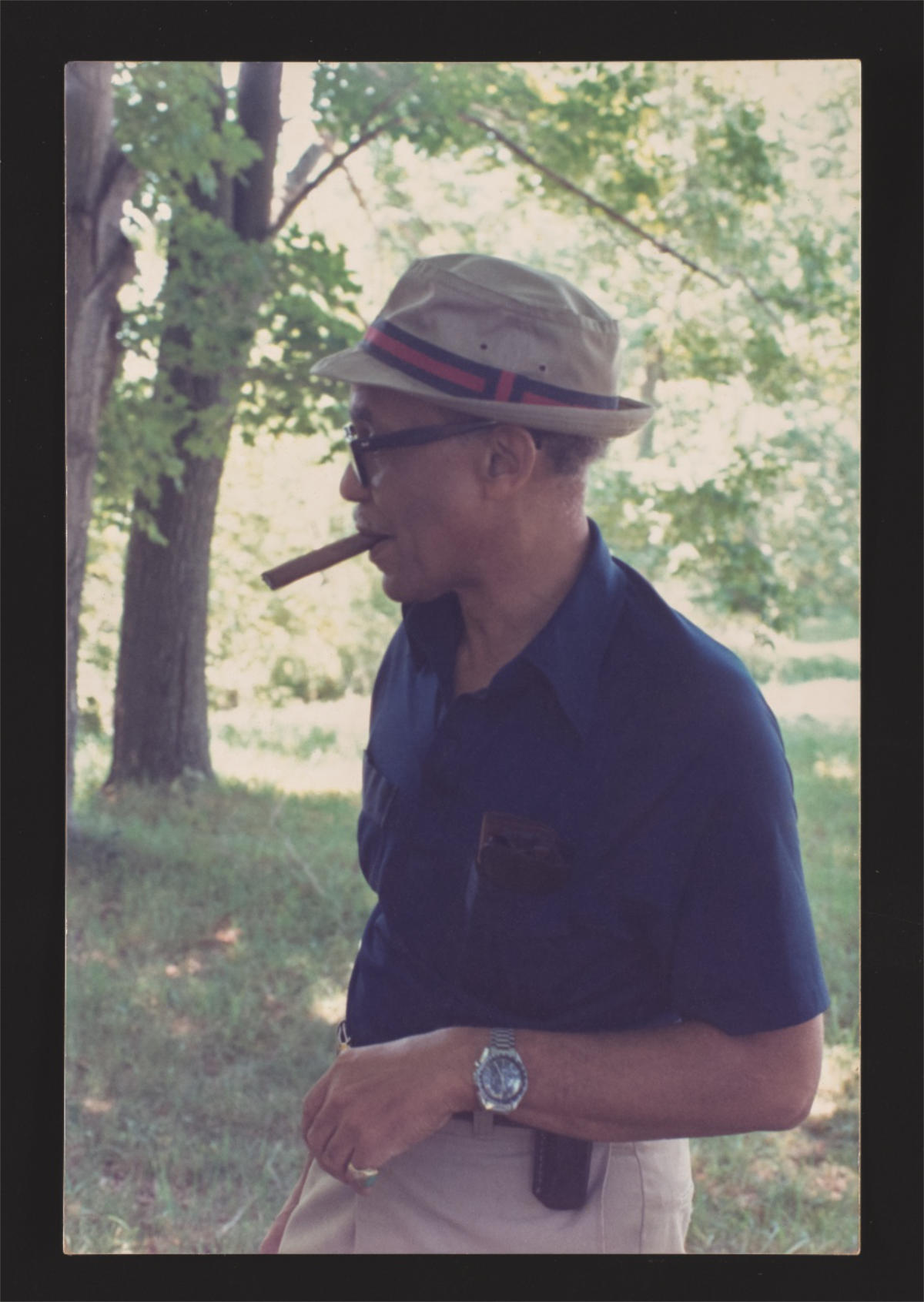
Raynald Aeschlimann, President and CEO of OMEGA says, “It’s a great honour to bring Ralph Ellison’s watch back to OMEGA in Switzerland. He was a writer of immense influence and a man with such an inspiring personality and talent. This Speedmaster accompanied him through many years of his exceptional life and will be a special highlight within our heritage collection.”
The Speedmaster watch worn by Ellison (ST145.012) was delivered to the USA in 1968, and shortly afterwards, the writer was interviewed and photographed in Riverside Park wearing it on his wrist. It is known that he continued to wear the timepiece for more than 25 years until his death in 1994, often under the cuff of a neatly tailored suit – as was his impeccable style.

Petros Protopapas, Head of Brand Heritage at OMEGA says, “Mr Ellison’s watch provides such a wonderful connection to American literature. Indeed, the timepiece itself shows signs of an active life and its well-loved appearance helps to give it a truly authentic provenance. We’re delighted to have secured the piece and we are looking forward to sharing this story with our museum visitors.”
The OMEGA Museum, situated at the brand’s HQ location in Switzerland, tells the in-depth story of OMEGA, covering its iconic heritage in watchmaking and innovation since 1848. The immersive showcases, movies and displays give visitors a true insight into the brand’s many passions, covering everything from space exploration, through to Olympic Games timekeeping and ocean diving. Amongst the many notable timepieces already on display are those worn by the astronaut Gene Cernan, former US president, John F. Kennedy, and the world’s favourite spy, James Bond.
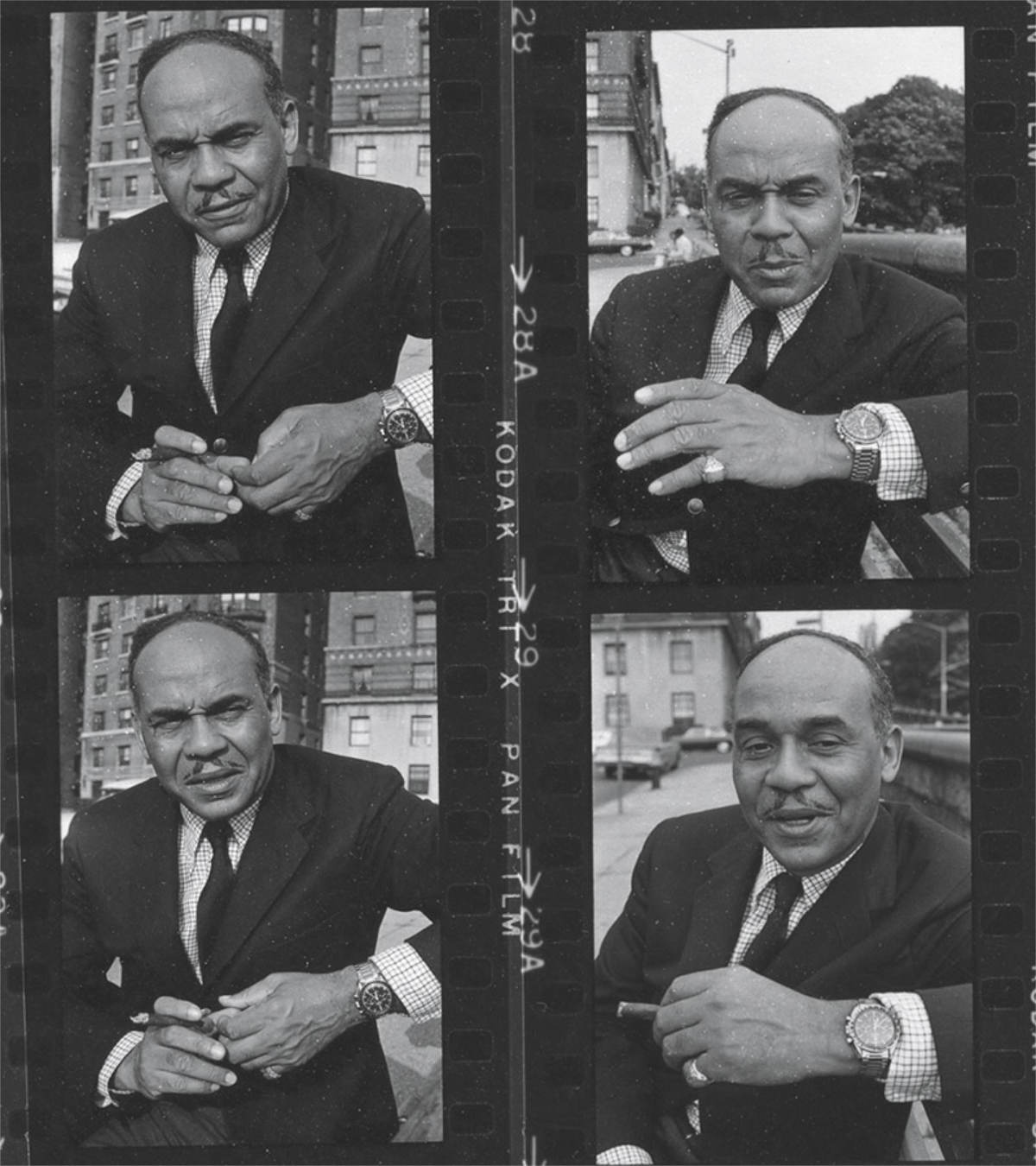
About the Watch
Generic information as given on Phillips’ website:
Manufacturer: OMEGA
Year: 1968
Reference No: 145.012-67 SP
Movement No: 25’008’312; movement additionally stamped OXG
Model Name: Speedmaster Professional
Material: Stainless steel
Calibre: Manual, Calilbre 321, 17 jewels
Bracelet/Strap: Stainless steel OMEGA bracelet, endlinks stamped 516, max length 210mm
Clasp/Buckle: Stainless steel OMEGA deployment clasp, reference 1039, no. 13, stamped 4.67
Dimensions: 40mm Diameter
Signed: Case, dial, movement, and bracelet signed.
Accessories: Accompanied by OMEGA Extract from the Archives confirming production of this watch March 15th, 1968 and subsequent delivery to the United States.
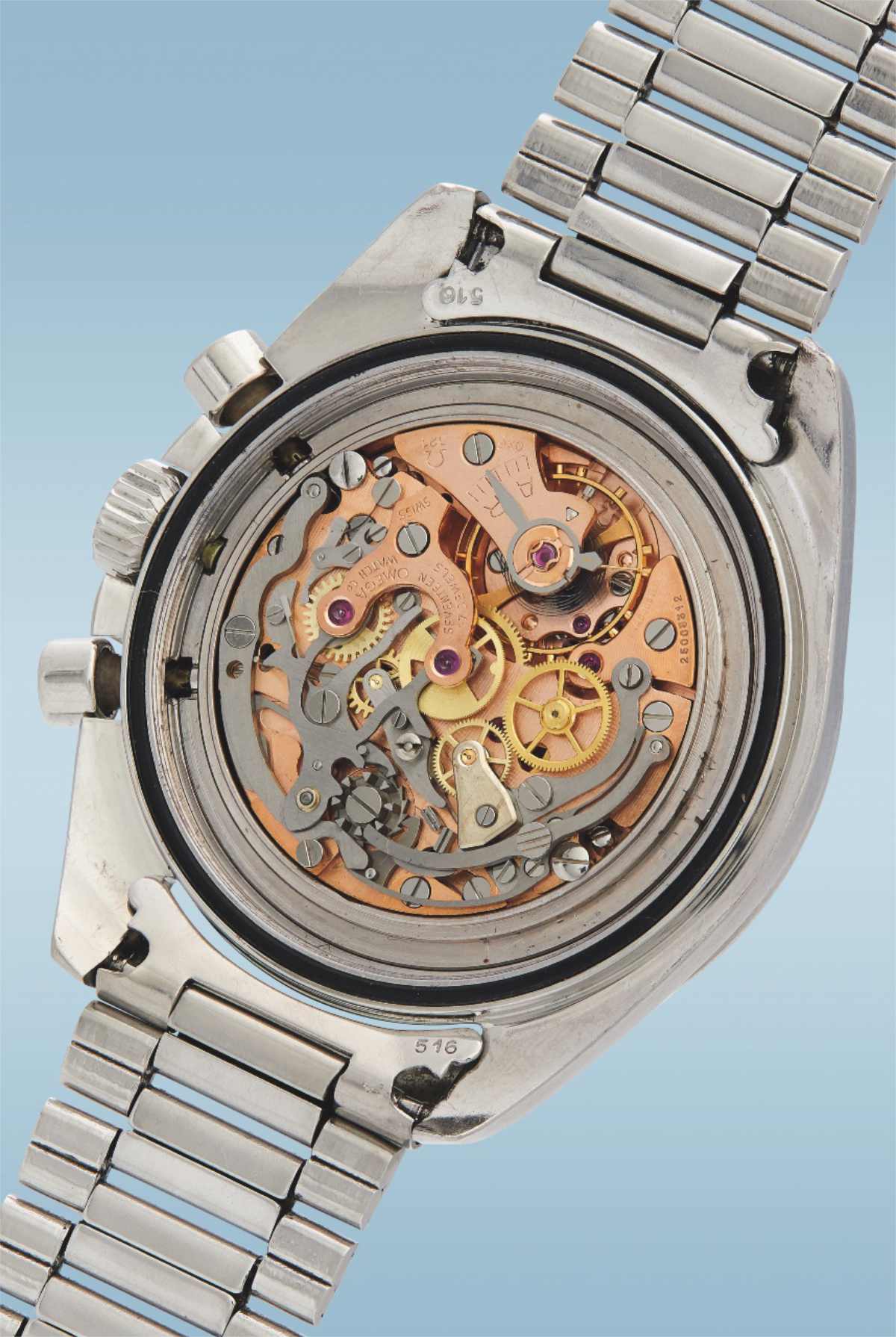
OMEGA Notes
- The OMEGA Speedmaster ST145.012 was the very last reference powered by OMEGA’s legendary Calibre 321.
- The ST145.012 was (together with its earlier “brother” ST105.012) one of the two Speedmaster references that were worn on the lunar surface during the missions of Apollo 11, 12, 14, 15, 16 and 17. These references were also worn onboard the Apollo 13 mission.
- With the serial number, we can confirm the model reference. The Speedmaster that eventually became Ralph Ellison’s watch was produced on March the 15th, 1968, and our archives further confirm delivery of the watch to the USA on April the 30th, 1968, via our agent of the time - Norman M. Morris Corp. in New York.
- The watch features its original stainless steel bracelet with reference 1039.
- The chronograph is absolutely original, with most of its original luminous material (Tritium).
- The hands are original, as is the bezel with its tachymeter scale that features the socalled “Dot over 90” or “DON”. This references the historic detail of a small dot pointing to the number “90”, which is found diagonally above the upper right corner of the zero.
- As evidenced by numerous photographs showing Ralph Ellison wearing his Speedmaster on many occasions, the watch shows signs of an active life.
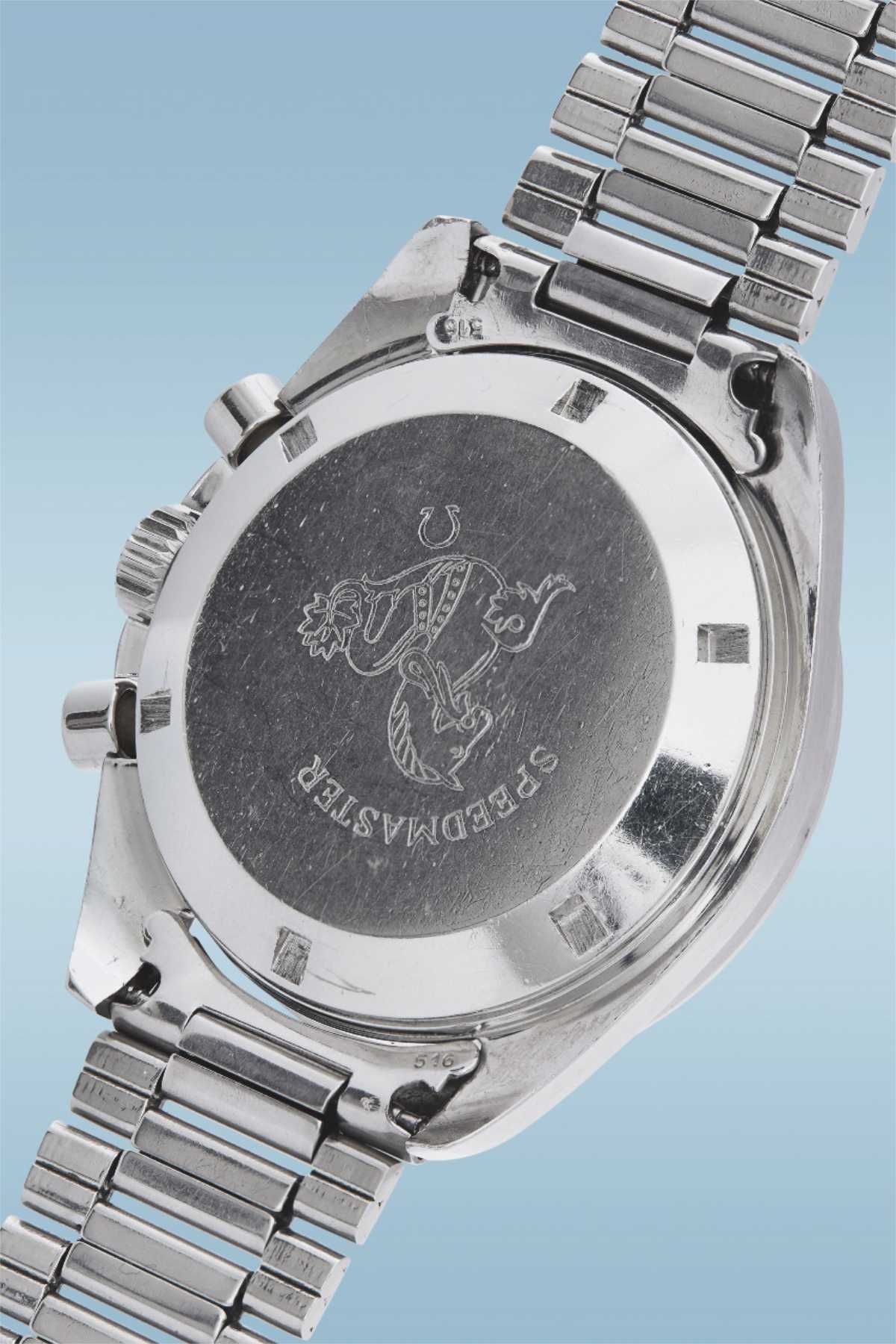
About Ralph Ellison
Ralph Ellison (1913-1994) was an American novelist, most famously known for his novel Invisible Man, published in 1952. The book is regarded as one of the greatest American novels of all time and addresses many of the social and intellectual issues facing African Americans in the early twentieth century.
Phillips’ catalogue essay
His story begins in Oklahoma City, Oklahoma, right before the dawn of World War I in 1913. His mother names him after Ralph Waldo Emerson, with the hopes that he will one day become a poet. In his formative years, he experienced the death of his father at the age of three, the disappearance of the vibrant Black neighborhood in Tulsa known as Greenwood, which he passed through on his way to a better life in Gary, Indiana. Greenwood was wiped out when he returned to Oklahoma a few months later, razed to nothing by the ravages of the Tulsa Race Massacre of 1925.
He endures the hardships of the Great Depression, a single mother raising him and his younger brother in Oklahoma. With the elemental guidance of his namesake always with him, he immerses himself in literature as diverse and varied as Mark Twain, Herman Melville, James Joyce, William Faulkner, Dostoyevsky, Thomas Hardy, T.S. Eliot (a later direct inspiration for the novel that would define him), and Richard Wright. Speaking later in life about his childhood love of literature, Ellison says, “And always, I was the hero. I identified with the hero. Literature is integrated. And I'm not just talking about color, race. I'm talking about the power of literature to make us recognize again and again the wholeness of the human experience.”
In 1933, he hops on a train to Alabama, to the renowned Tuskegee Institute, admitted for lack of a trumpet player in their celebrated orchestra, where he studies for three years before departing to New York City in order to earn money to complete his studies. He never returns. Instead, he is immersed in the culture of Harlem in the 1930s, the dynamic and thriving unofficial capital of Black America at the time. He meets Langston Hughes, arguably the most successful Black author of the era, who inspires him to write his first short story (and coincidentally, introduces him to his wife). After a short stint in the U.S. Merchant Marine during World War II, he sets to work on creating Invisible Man - his masterpiece. It would eventually become known as a genre-defying bildungsroman, a literary encapsulation of the American sociocultural experience so profound and perpetually relevant that even now, sixty years after its publication date, it is still widely read the world over.
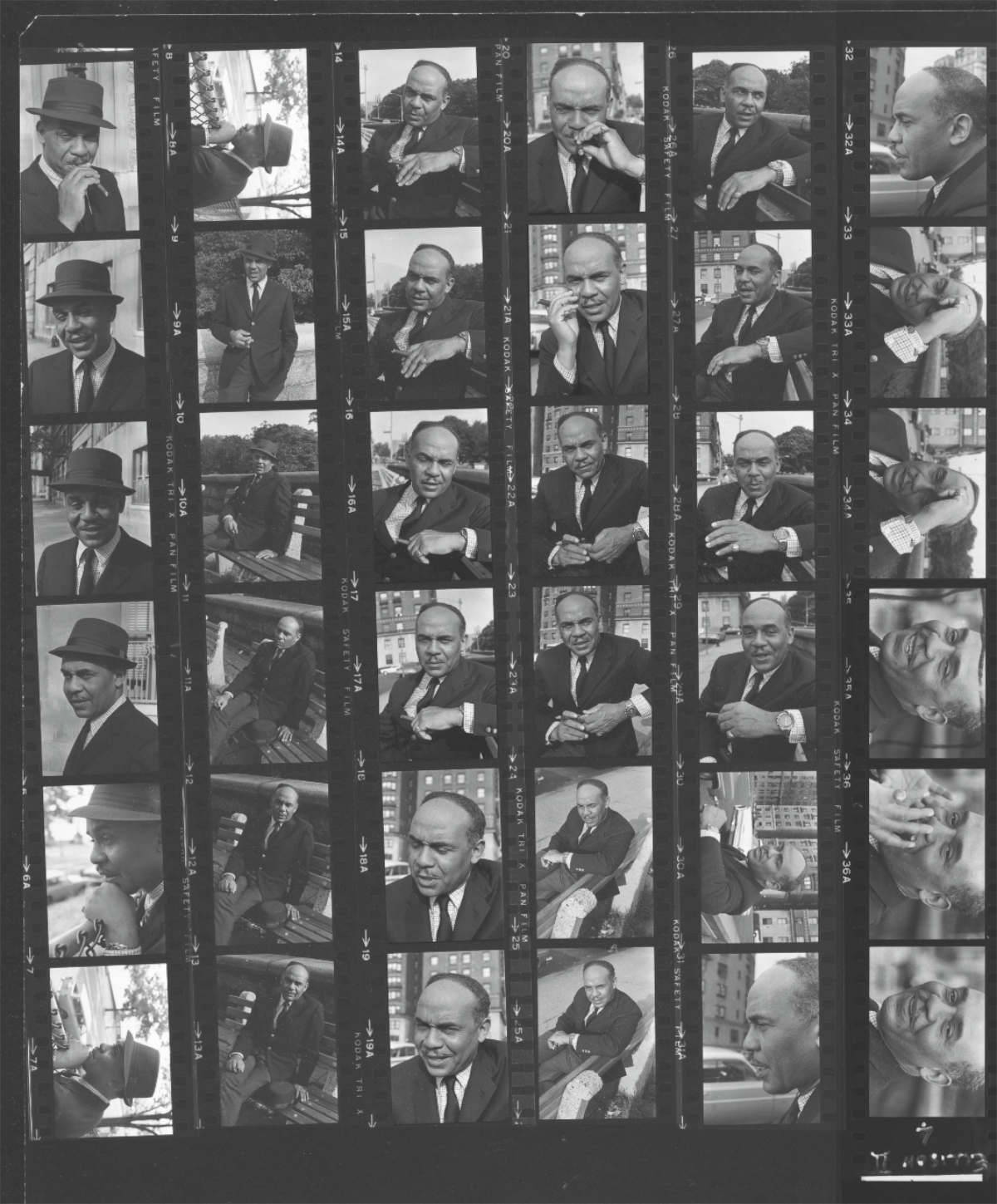
He begins work on Invisible Man in 1945 and it takes him seven years to complete what would be the only novel published during his lifetime. In a small country house in Vermont and in an apartment in the Diamond District in Manhattan, he works on a typewriter, encouraged, sometimes sternly, by his indefatigable wife Fanny. Upon publication, it becomes an instant success. The Canadian-American author and critic, and later friend of Ellison, Saul Bellows, wrote immediately after its release in 1952, “it is tragi-comic, poetic, the tone of the very strongest sort of creative intelligence.”
Time and time again, we turn to Invisible Man to better understand our present and ourselves. Ellison encompasses not only the Black experience in America, but the American experience itself – the problem of invisibility is not the provenance of one race or culture. The dilution of reality that runs through Invisible Man only serves to make those important moments more visceral. The magnitude of his impact on American literature, culture, and even the arts, cannot be understated. For example, renowned contemporary artists such as Kerry James Marshall created important paintings inspired by Invisible Man, with the ideas of visibility and invisibility in society influencing his artwork. Ellison sought to transcend the narrow definition of what he was supposed to be writing and who he was supposed to be writing for.
Reading Invisible Man with the added lens of a watch enthusiast, watches, clocks, and time are clear motifs appearing throughout the novel. Used as props during key narratives, they are detailed with such nuanced understanding that it’s clear that Ellison was familiar with and perhaps even intrigued by timekeeping and timekeepers. Later in the novel, after receiving Brother Tarp’s leg shackles from his prison sentence, the narrator muses on this unlikely yet deeply poignant gift:
“I looked at the dark band of metal against my fist and dropped it upon the anonymous letter. I neither wanted it nor knew what to do with it; although there was no question of keeping it if for no other reason than that I felt that Brother Tarp’s gesture in offering it was of some deeply felt significance which I was compelled to respect. Something perhaps, like a man passing on to his son his own father’s watch, which the son accepted not because he wanted the old-fashioned timepiece for itself, but because of the overtones of unstated seriousness and solemnity of the paternal gesture which at once joined him with his ancestors, marked a high point of his present, and promised a concreteness to his nebulous and chaotic future. And now I remembered if I had returned home instead of coming north my father would have given me my grandfather’s old-fashioned Hamilton, with its long burr-headed winding stem.”
Not only did Ellison understand the connotation of hereditary significance watches can have – keeping in mind Ellison’s own father died when he was quite young – and the emotional weight they can carry, he could speak of specific watches eloquently and descriptively. As a man apart from time, “aloof” like one of his idols Faulkner, he endured criticism for not conforming to what is expected of him. After the success of Invisible Man, he spends time lecturing both nationally and internationally, writing short stories and critical essays, and humbly accepting the gamut of literary distinctions. He is an avid musician, particularly jazz, and photographer – a Hasselbad to be exact – a dog enthusiast, a cigar aficionado. His home on the Upper West Side overlooking Riverside Park is filled with African idols, framed prints, thousands of books and clippings. He wears impeccably tailored suits and tuxedos, and a well-groomed moustache. On his wrist, beginning in the summer of 1968, an Omega Speedmaster reference 145.012-67 – the present lot.
Though we were unable, through our research, to ascertain whether Ellison received this Speedmaster as a gift or purchased it himself, we do know that shortly after the watch was delivered to the United States in 1968, as the Omega Archive Extract confirms, Ellison was interviewed and photographed in Riverside Park wearing the watch. He would wear it for the remainder of his life, even when the top chronograph pusher had fallen off. The Speedmaster would be present on his wrist, often slipped under the cuff of a nattily tailored suit, paired with the curl of cigar smoke, for the next twenty-five years, until his death from pancreatic cancer in 1994.
After the death of his wife in 2005 and the presumed disbursement of the rest of the Ellison estate, the watch would eventually be sold at a small auction house in Long Island City in 2016, where it was purchased, unexpectedly, by the current consignor who was merely looking for an all-original example of the reference, rather than a monumental and historical wristwatch. Only the introductory lot text, listing its provenance as from “The Ralph and Fanny Ellison Charitable Trust,” and the missing pusher, which matched some blurry images of Ellison wearing the watch, gave any clue that this watch was indeed Ellison’s.
Enlisting the help of renowned journalist Michael Clerizo, eventually the consignor located, deep in the Ralph Ellison Archives kept at the Library of Congress, copies of Ralph and Fanny Ellison’s insurance statements where the exact serial number of the watch had been consistently recorded. Armed with this indisputable provenance, Phillips is now humbled and honored to present the cherished Speedmaster of an icon of American literature.
The watch is crisp, though the dial has experienced minor aging that is typical in these references. The consignor carefully serviced the watch, where only the movement was cleaned and adjusted, a period-correct chronograph pusher installed, and the gasket and crystal replaced to ensure water resistance. The original crystal, in fact, accompanies the watch. Otherwise, it is in its original state of preservation as purchased from the auction house, almost exactly as it had been worn by Ellison for the twenty-five years it was in his possession.
Credits
All photographs courtesy of Phillips from phillips.com












